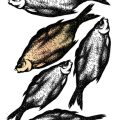Introduction to Scottish Fishing Villages
Nestled along Scotland’s rugged coastline, traditional fishing villages offer an enchanting glimpse into the nation’s maritime heritage. These charming communities, with their colourful harbours and weathered stone cottages, have been the lifeblood of Scottish coastal culture for centuries. Each village tells its own story through unique traditions, age-old fishing practices, and a deep connection to the North Sea. From the winding lanes of Crail in Fife to the dramatic seascapes of Portsoy in Aberdeenshire, visitors are invited to explore a way of life shaped by both the bounty and challenges of the sea. Stepping into these villages is like stepping back in time—where local accents fill the air, seafood is landed fresh each morning, and community spirit thrives against a backdrop of breathtaking scenery. Whether you’re drawn by history, culture, or the thrill of angling, Scotland’s fishing villages capture the very essence of British coastal living.
Local Culture and Traditions
To truly understand the essence of traditional Scottish fishing villages, one must delve deep into their unique culture and time-honoured traditions. These coastal communities are not just defined by their proximity to the North Sea or the Atlantic, but by a vibrant tapestry of customs that have been passed down through generations. From lively ceilidh dances to legendary folk tales whispered in harbour pubs, everyday life in these villages is steeped in heritage.
Enduring Customs and Social Gatherings
The heartbeat of village life can often be found at communal events. Ceilidhs, which are traditional Scottish social gatherings featuring music and dancing, offer both locals and visitors an authentic taste of rural camaraderie. These joyful occasions bring together people of all ages to share in laughter, storytelling, and spirited reels. Alongside the ceilidhs, seasonal festivals celebrating the bounty of the sea—such as seafood feasts where freshly-caught langoustines, mussels, and haddock take centre stage—are eagerly anticipated highlights on the local calendar.
Key Cultural Events in Scottish Fishing Villages
| Event | Description | Typical Time of Year |
|---|---|---|
| Ceilidh Dance Nights | Traditional gatherings with live folk music, group dances, and storytelling | Throughout the year |
| Seafood Festivals | Celebrations featuring local catch prepared by village cooks and chefs | Spring & Summer |
| Burns Night Suppers | An evening honouring Robert Burns with poetry readings and haggis feasts | 25th January |
| Fishermen’s Blessing Ceremonies | Processions and blessings for safe journeys at sea, often led by local clergy | Start of fishing season |
Folk Tales and Oral History
No visit to a Scottish fishing village would be complete without hearing a few tales spun by seasoned locals. Stories of selkies—mythical seal-people—shipwrecks, and heroic fishermen form a cherished oral tradition. These narratives not only entertain but also preserve community values, shaping how each generation connects with the sea and its mysteries.
By immersing yourself in these enduring customs, you’ll gain far more than just a glimpse into daily life; you’ll experience first-hand the resilience and warmth that have enabled these villages to thrive for centuries.
![]()
3. Angling Opportunities and Techniques
Scotland’s traditional fishing villages are a veritable playground for anglers, with a rich tapestry of opportunities that cater to both seasoned experts and enthusiastic newcomers. Along the rugged coastlines, sea fishing reigns supreme, where you can cast from ancient harbour walls or venture out on local boats with knowledgeable skippers. Here, cod, haddock, and mackerel are plentiful, especially during the warmer months when shoals gather nearshore. The experience is as much about technique as it is about patience; using time-honoured methods such as handlining and bait-fishing connects visitors directly to the region’s maritime heritage.
Inland, river angling offers a distinctly different but equally rewarding challenge. Scotland’s famed salmon rivers—such as the Dee and Spey—draw British anglers from far and wide. Traditional fly fishing dominates these waters, with delicate casts and locally tied flies being the order of the day. Many Scottish ghillies (river guides) still employ classic tactics passed down through generations, sharing tales and tips as they help you read the water and perfect your presentation.
Modern approaches have not been left behind in these historic settings. Contemporary spinning gear and lures now complement traditional tackle, giving anglers more versatility in both saltwater and freshwater environments. Catch-and-release practices are widely promoted in line with conservation efforts cherished by British anglers keen to protect native stocks for future generations.
Whether you’re casting into bracing North Sea winds or quietly stalking a Highland stream, Scottish fishing villages offer an immersive blend of old and new. Embracing both heritage techniques and modern innovations, they provide a uniquely British angling experience that is deeply rooted in local culture yet ever-evolving.
4. Must-Visit Villages and Their Highlights
When it comes to immersing yourself in the culture and angling traditions of Scotland, a visit to its classic fishing villages is essential. Each village boasts its own unique character, picturesque harbours, and storied maritime heritage. Here are three standout destinations where you can soak up local flavour and cast your line into history.
Crail: Cobbled Charm on the East Neuk
Nestled in Fife’s East Neuk, Crail is renowned for its winding cobbled streets and historic harbour framed by colourful cottages. The harbour, dating back to the 16th century, is still used by local fishermen who land lobster and crab daily. Anglers can fish from the old stone pier or join local skippers for a day at sea. After a morning’s fishing, enjoy a fresh seafood lunch from one of the harbourside smokehouses—a true taste of Scotland.
Portsoy: Granite Heritage and Maritime Festivals
On Aberdeenshire’s Moray Firth coast lies Portsoy, famous for its two harbours—one of which is among Scotland’s oldest. The village comes alive during the annual Scottish Traditional Boat Festival, celebrating maritime craftsmanship and seafaring music. Portsoy offers excellent rock fishing along the rugged coastline, while families will love trying their hand at crabbing off the quayside. Don’t miss sampling locally-made ice cream after your angling adventures.
Ullapool: Gateway to Highland Waters
Set against a dramatic backdrop of hills and sea lochs, Ullapool is a vibrant village on the shores of Loch Broom in the Northwest Highlands. Its working harbour buzzes with fishing boats unloading their catch, supplying some of the freshest seafood in Britain. Anglers can target mackerel from the pier or arrange boat trips out to deeper waters teeming with pollock and cod. Ullapool’s artsy cafés and lively pubs offer perfect respite after a day outdoors.
Village Highlights at a Glance
| Village | Historic Feature | Fishing Experience | Cultural Quirk |
|---|---|---|---|
| Crail | 16th-century harbour | Pier & boat fishing for lobster/crab | Seaside smokehouses |
| Portsoy | Twin granite harbours | Rock & quay fishing; crabbing | Traditional Boat Festival |
| Ullapool | Working Highland harbour | Pier/boat angling for mackerel, cod | Lively music pubs & art scene |
No matter which village you choose, each offers an authentic slice of Scottish coastal life—where centuries-old customs meet world-class angling opportunities against breathtaking scenery.
5. Sustainable Fishing and Conservation
In the heart of Scotland’s fishing villages, a powerful movement towards sustainable angling and marine conservation is gaining traction. Local communities are acutely aware that the very future of their traditions depends on the careful stewardship of coastal resources. From Ullapool to Crail, grassroots initiatives are flourishing, with villagers, anglers, and business owners joining forces to implement environmentally responsible practices.
Community-led Environmental Initiatives
Many Scottish villages have established local conservation groups dedicated to protecting marine habitats. These organisations work in tandem with national bodies such as Marine Scotland, organising regular beach cleans, habitat restoration projects, and educational workshops aimed at both residents and visiting anglers. The focus is often on safeguarding vital breeding grounds for species like cod and haddock—fish that are integral to both the local economy and culinary heritage.
Responsible Angling Practices
The British angling community has increasingly embraced codes of conduct that promote catch-and-release, size limits, and seasonal restrictions. Such measures ensure that fish populations remain healthy for generations to come. Tackle shops in villages like Anstruther often provide information on sustainable bait choices and up-to-date regulations, reinforcing the ethos of ethical fishing among locals and tourists alike.
Supporting Responsible Tourism
Tourism operators in traditional Scottish fishing villages are keenly aware of their environmental responsibilities. Many now offer eco-friendly angling experiences, encouraging visitors to respect protected areas and support local conservation schemes through voluntary contributions or participation in citizen science projects. This approach not only enhances the visitor experience but also aligns with growing concerns within the British angling scene regarding overfishing and habitat loss.
The collective efforts within these communities serve as a model for balancing heritage tourism with ecological preservation. By fostering a culture of environmental awareness, traditional Scottish fishing villages continue to set high standards for sustainable angling while ensuring their unique way of life endures for future generations.
6. Local Culinary Delights
One of the most rewarding aspects of visiting traditional Scottish fishing villages is the opportunity to savour their unique culinary heritage. Here, every meal tells a story of the sea, with the freshest catch delivered straight from boat to plate. Whether you find yourself nestled in a cosy village pub or grabbing a bite at the local chippy, you’ll be treated to seafood that’s as authentic as it gets.
Village Pubs and Chippies: The Heartbeat of Coastal Cuisine
These small communities take immense pride in their food traditions. Step into any waterside pub and you’re likely to encounter locals tucking into plates of golden-battered haddock and chips or warming themselves with bowls of hearty Cullen skink—a creamy soup crafted from smoked haddock, potatoes, and onions. Each dish is prepared with reverence for local ingredients and time-honoured methods passed down through generations.
Signature Dishes You Must Try
- Smoked Haddock: Often gently poached or used in pies, its rich flavour is unmistakably Scottish.
- Cullen Skink: A robust, comforting soup named after the fishing village of Cullen—perfect after a day by the harbour.
- Fresh Langoustines and Crab: Caught daily and served simply to highlight their natural sweetness.
A Community Affair
Dining in these villages is more than just eating—it’s a chance to connect with local culture. Fishermen swap stories over pints, families gather for Friday fish suppers, and visitors are welcomed like old friends. Sampling these dishes isn’t merely about taste; it’s about embracing a way of life shaped by the tides and traditions of Scotland’s rugged coast.

